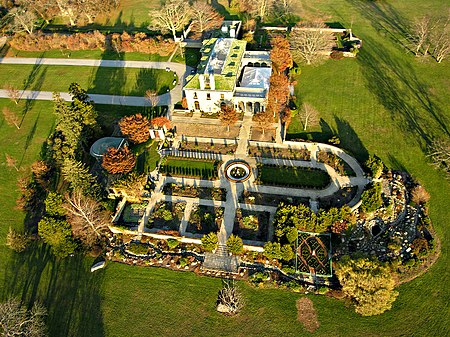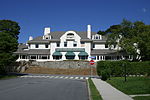Harkness Memorial State Park
1952 establishments in ConnecticutBotanical gardens in ConnecticutHistoric districts on the National Register of Historic Places in ConnecticutHistoric house museums in ConnecticutHouses completed in 1907 ... and 10 more
Houses in New London County, ConnecticutHouses on the National Register of Historic Places in ConnecticutMuseums in New London County, ConnecticutNRHP infobox with nocatNational Register of Historic Places in New London County, ConnecticutParks in New London County, ConnecticutProtected areas established in 1952State parks of ConnecticutUse mdy dates from August 2023Waterford, Connecticut

Harkness Memorial State Park is a historic preservation area with botanical garden and recreational features located on Long Island Sound in the town of Waterford, Connecticut. The state park's 304 acres (123 ha) center around Eolia, a 42-room Renaissance Revival mansion with formal gardens and greenhouses. The park is managed by the Connecticut Department of Energy and Environmental Protection.
Excerpt from the Wikipedia article Harkness Memorial State Park (License: CC BY-SA 3.0, Authors, Images).Harkness Memorial State Park
Great Neck Road,
Geographical coordinates (GPS) Address Nearby Places Show on map
Geographical coordinates (GPS)
| Latitude | Longitude |
|---|---|
| N 41.305 ° | E -72.113333333333 ° |
Address
Great Neck Road 293
06385
United States
Open on Google Maps










